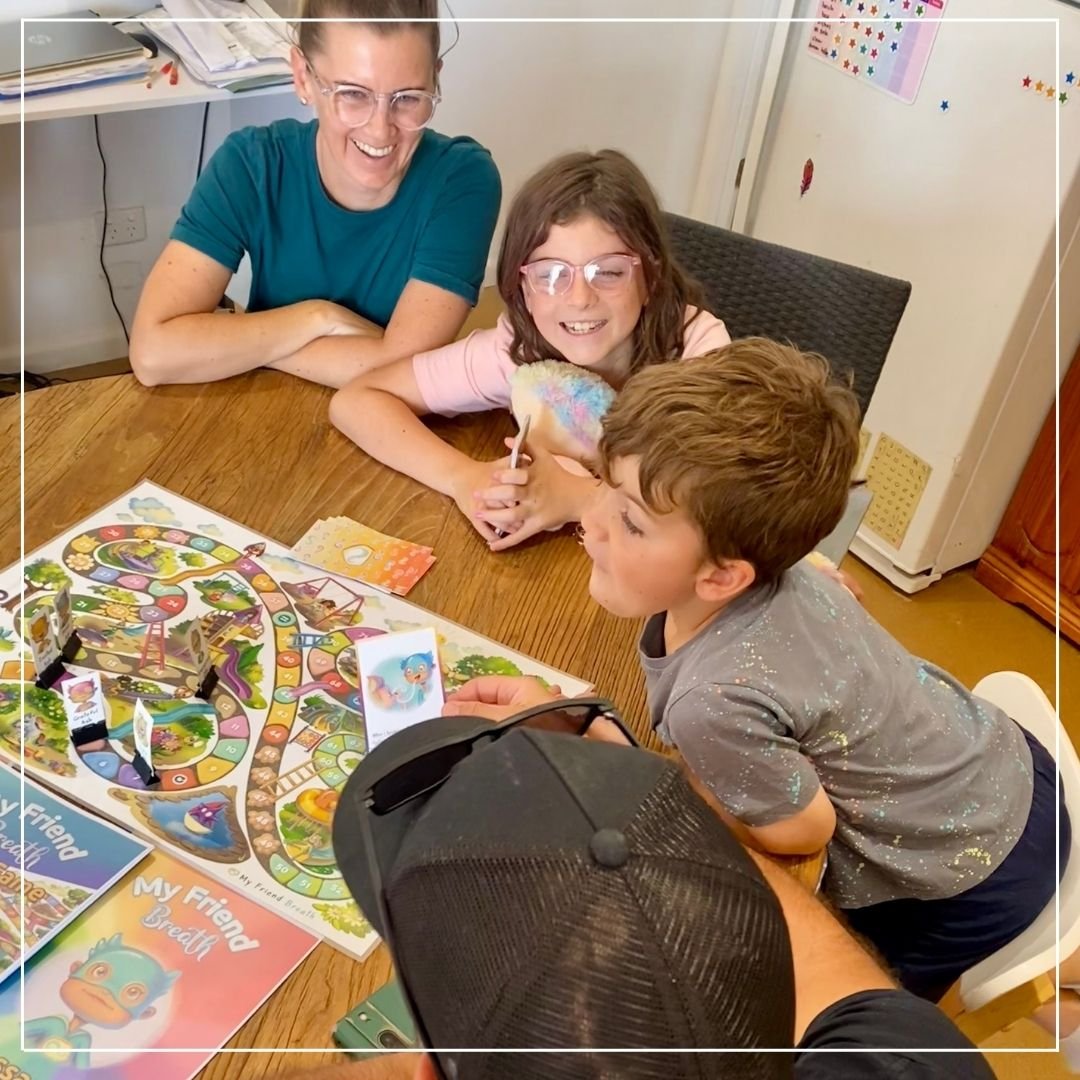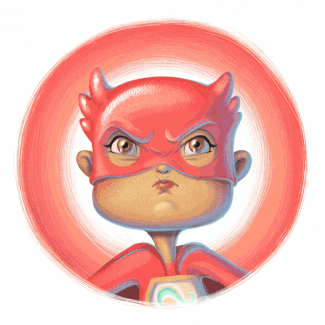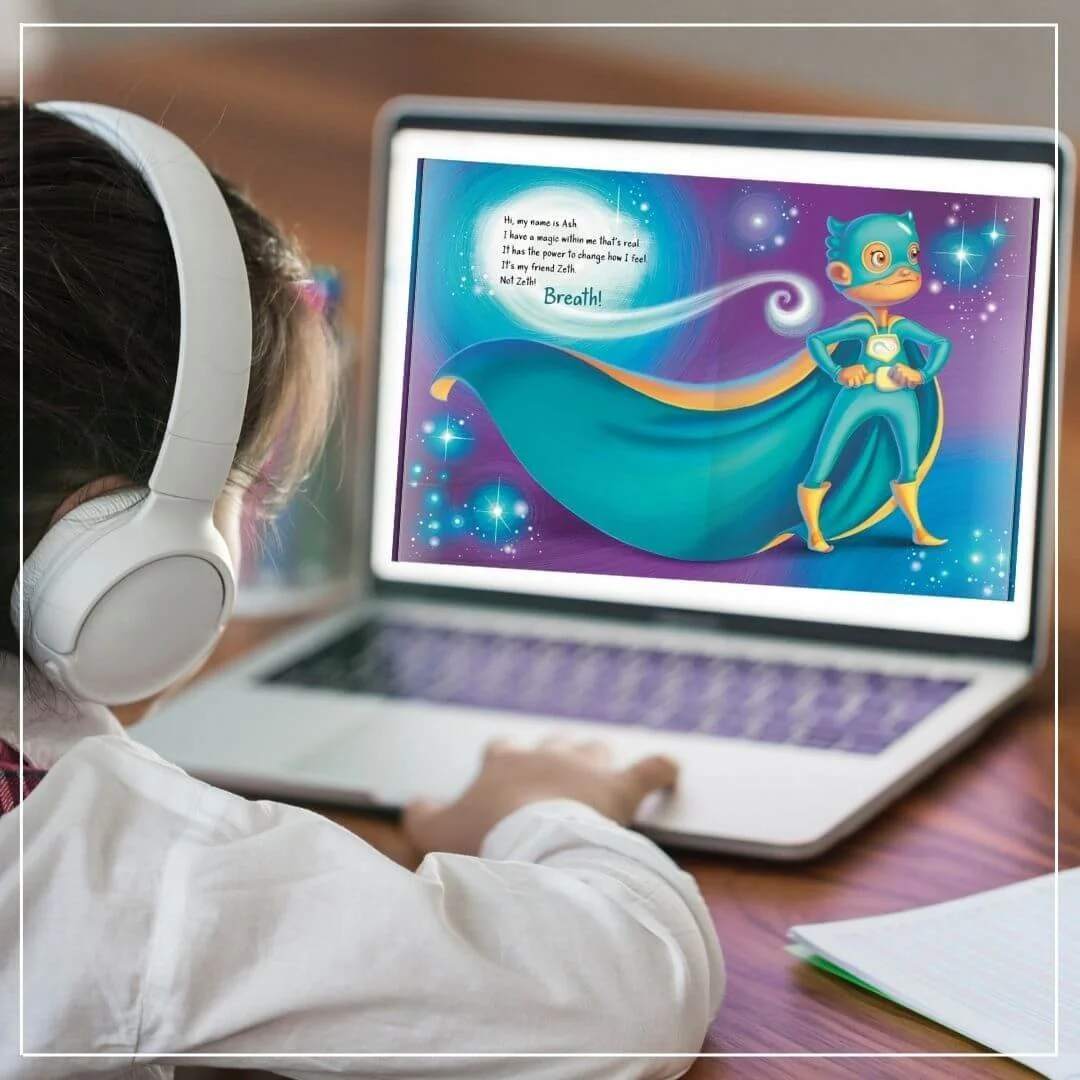Backed by Science - Powered by Play!
At My Friend Breath, our playful approach to mindful breathing is grounded in insights from professionals in breathwork, neuroscience, and child development.
At the core of our approach is the say-and-do game, a research backed strategy for teaching emotional-regulation through mindful breathing. It transforms the power of the breath from an abstract concept into a practical skill that children can understand, enjoy, and use in everyday life.
A growing body of research on the benefits of play supports our empowerment-based game. Studies show that guided, purposeful play builds confidence, strengthens emotional awareness, and promotes healthy brain development. Leading institutions like the Harvard Center on the Developing Child highlight how guided play fosters emotional resilience and lifelong learning.
Scroll down to explore how our My Friend Breath books and resources are powered by play and backed by science!
Why the Breath?
Before we explore the say-and-do game, let’s look at why the breath is a superpower. It’s quiet, always available, and powerful enough to calm the nervous system and change how a child feels, anytime, anywhere.
Research across neuroscience, psychology, and breathwork shows that how we breathe directly affects how we feel. The breath is one of the few systems in the body we can consciously control, and by changing the pattern in which we are breathing, we can shift our emotional state in the moment.
Dr. Dan Siegel a psychiatrist and author known for his work in brain science and child development, and Dan Brulé an international leader and pioneer in modern breathwork, are among those who highlight the connection between breath and the nervous system.
Their work shows that when children understand how to use their breath, they gain a science-backed strategy for emotional-regulation and a way to feel more in control of how they feel.
Understanding Emotional Overload: “Flip the Lid”
Dr Dan Siegel’s “Flip the Lid” model explains what happens in the brain when emotions become overwhelming.
In stressful moments, the lower brain—the amygdala and brainstem—takes over, while the upper brain— the “thinking brain”, the prefrontal cortex—temporarily goes offline. This can leave a child feeling swept up in emotion, out of control, or unsure how to respond.
Mindful breathing helps settle the nervous system and bring the upper brain back online. When a child recognizes they’ve gone offline and uses their breath to respond, they begin to take charge of how they feel, and handle whatever emotion comes their way.

What Dan Brulé Teaches Us About Breath and Emotion
Dan Brulé describes the breath as one of the most powerful tools we have for calming the mind and body. He explains that the way we breathe doesn’t just reflect how we feel—it actually shapes how we feel.
Each emotional state is linked to a particular breathing pattern. For example, when we feel anxious, our breath often becomes short and shallow. When we are calm, it is slower and deeper. By consciously shifting our breathing pattern, we can shift our emotional state.
Brulé encourages people to practice specific breathing techniques that support shifting different emotional states such as frustration, anxiety, or overwhelm. This gives us a practical, science based way to respond to emotions rather than react to them.
He also reminds us that even a small daily practice can make a difference and help reduce stress, improve focus, and support emotional wellbeing.
The Science Behind the Say-and-Do Game
The say-and-do game is more than just a fun activity—it’s a structured, research-informed way to help children learn how to recognize, understand, and manage their emotions through mindful breathing.
Drawing on the work of experts like Dr Dan Siegel and Dan Brulé, this approach turns well established science into a simple, kid-friendly game children can play and remember.
To support real learning, we’ve organized the process into four clear steps: When, Why, What, and How.
These steps make it easier for children to understand when to use their breath, why it helps, what kind of breath to choose, how to do the breathing pattern and how long to stay with it to feel the shift.
Let’s take a closer look at each step and how it is backed by science, starting with how naming a feeling helps bring the thinking brain back online.
When I Feel...
Naming the Emotion
The first step in the say-and-do game is naming how you feel.
For example - “When I feel frustrated…”
This simple phrase reflects what Dr Dan Siegel calls “Name it to Tame it.” His research shows that when we pause to label an emotion, we help calm the amygdala (the part of the brain responsible for reacting to stress) and bring the thinking brain (the prefrontal cortex) back online.
“When we name our emotions, we give them a sense of coherence. We can respond to them rather than being overwhelmed by them.”
Naming an emotion gives it shape. It helps children feel more in control and builds their ability to respond, rather than react.
In our Superhero Club Playground, every emotion is explained in kid-friendly language. This supports emotional literacy and helps children better understand the feeling they’re experiencing—an essential first step toward emotional-regulation.
The next part of the sentence is where the child sets an intention—“When I feel frustrated, my friend Breath and I play say and do.” This simple spoken commitment supports self-regulation by linking a feeling to taking a specific action. Research on implementation intentions shows that people are more likely to follow through and shift their emotional state when they form “if-then” statements—such as, “If I feel anxious, then I play say-and-do.”
This aligns with findings by Gollwitzer and Sheeran (2006), whose meta-analysis demonstrated that implementation intentions significantly increase goal achievement by helping bridge the gap between intention and action.
Why I Use My Breath
Change your breath, change your emotion.
The second step in the say and do game helps children understand why their breath is such a helpful tool.
Breathwork expert Dan Brulé explains that every emotional state has its own breathing pattern. The way we breathe when we’re sad is different from how we breathe when we’re angry, nervous, or relaxed. If we stay in the same breathing pattern, we’re likely to stay in the same emotional state.
The quickest way to shift how we feel, whether we want to feel more calm, more balanced, or more uplifted, is to change the way we breathe.
“When your state changes, your breathing pattern changes. And it’s a two-way street: when you change your breathing pattern, you change your state!”
— Dan Brulé
We’ve simplified this concept for children with a powerful catch cry that is incorporated into the say-and-do game:
When I feel frustrated, my friend Breath and I play say and do. I say “When I change the way I’m breathing, I change the way I’m feeling.”
This simple phrase helps children connect their breath with how they feel. Over time, it becomes a gentle inner guide—reminding them they can use their breath to shift their state, anytime they need support.

What I Do
Every feeling has a breath that helps.
Just as each emotion affects us in its own way, different breathing techniques have different effects on the nervous system.
That’s why our best practice approach to mindful breathing pairs each emotion with a specific, supportive breathing pattern. One that is designed to bring balance, restore calm, or uplift the mood, depending on what’s needed in the moment.
By linking each emotion to a matching breath, children learn what to do when they feel a certain way.
When I feel frustrated, my friend Breath and I play say and do. I say “When I change the way I’m breathing, I change the way I’m feeling,“ and I do the wombat breath.
Each breathing pattern is carefully chosen to match the intensity and qualities of a specific emotion. Because emotions are, quite literally, energy in motion, these breaths are designed to help the body process and release the energy of the emotion in the most effective and supportive way possible.
To deepen this process, some of our breathing techniques are paired with other evidence-based practices, such as EFT (Emotional Freedom Techniques), Havening, and yoga based breathing. These gentle additions further support nervous system regulation and emotional release.
Together, this best practice approach offers children, and adults, a simple, practical way to change how they feel, using the power of mindful breathing.
How I Do It
It's not just how you breathe—it's for how long.
Each of our superhero breathing patterns comes with a step-by-step demonstration video that shows children exactly how to do the breath.
But just as important as doing the breath is staying with it—because using a specific breathing pattern for a sustained period is the key to shifting a child’s emotional state.
One of the most common mistakes is taking just one or two breaths and expecting to feel different right away. The nervous system needs a little more time to transition into a new state.
Neuroscientist Dr Jill Bolte Taylor, author of My Stroke of Insight, describes the 90-Second Rule. She explains that when we feel a strong emotion, the body releases a surge of chemicals that flood the nervous system for about 90 seconds. After that, the emotion can begin to settle—unless we keep it going by replaying the thoughts that triggered it or by staying in the same breathing pattern.
This is why changing the breath matters. If a child keeps breathing the way they do when they’re upset, the emotion lingers. But when they switch to a new breathing pattern and stay with it, they gently guide their mind and body toward a new emotional experience.
By regularly breathing along to our 90 second practice videos when they’re calm, children begin to remember both the steps and the rhythm. So when they want to feel more settled, more balanced, or even more uplifted, they know how to play say-and-do to support the shift they need, and how long to stay with the game for real change to happen.
A Science Backed Approach That Feels Like Magic
“I appreciate the way that the My Friend Breath Board Game can be used to help parents regulate their emotions just as much as children.
My son and I already enjoy practicing our breathing with the book, and are excited that the board game provides a new, interactive way to play with our friend Breath.
My Friend Breath is such a wonderful co-regulation tool that every household can benefit from having.”
- Hollie K, Parent
All our books and resources are designed to make breathing for emotional well-being fun, engaging, and effective—for children and the adults who support them.
Scroll down to discover our full range of books and resources!
Swipe to explore our range of books and resources!

Connect with us!
Thank you for your interest in our My Friend Breath resources. We are here to help you support and develop the emotional well-being of children around the world.
Are you keen to explore how we could collaborate?
Would you like to find out more about our author visits?
Do you have a query about our Superhero Club Membership?
Or perhaps you have another question or suggestion!
We are grateful to hear from you. Fill out the form, and we’ll be in touch :)



















